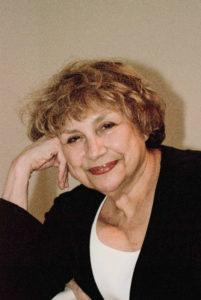Doctor Curmudgeon® Another Maverick
 By Diane Batshaw Eisman, M.D. FAAP Doctor Eisman, is in Family Practice in Aventura, Florida with her partner, Dr. Eugene Eisman, an internist/cardiologist
By Diane Batshaw Eisman, M.D. FAAP Doctor Eisman, is in Family Practice in Aventura, Florida with her partner, Dr. Eugene Eisman, an internist/cardiologist
Renpet, of the Curmudgeon Feline Family branch, gracefully leaped onto a chair at the kitchen table. Although she was retired from her career at the CIA, it was a poorly kept secret that her services were, not infrequently, called upon. Joining her cousin, Galahad, the Siberian Husky family member and major domo of the Curmudgeon family, she delicately slurped the tea that he had prepared.
“It does make me purr,” she told her cousin, “that our rather unruly cousin, Doctor Curmudgeon, is consistent with her physical therapy.”
Removing his nose from his morning newspaper, the canine said, “I assume you have just seen her do the exercises assigned by her physical therapist.”
“Indeed,” answered Renpet.
“Interesting that you should mention that. One of the think tanks of which I am a member is now doing research on physical therapy. There had been problems with payments to physical therapists and certain restrictions. Our findings thus far are quite positive and we will most likely form an advocacy group. In fact, I will suggest that our curmudgeon’s next column have something to do with physical therapy.”
Once upon a time, there was a young Australian nurse by the name of Sister Elizabeth Kenny (She was not a nun in a religious order, but Sister is a term in the United Kingdom for nurse)
Working in the Australian Outback in 1909, she encountered many cases of Polio or Infantile Paralysis. There was no effective treatment, let alone a cure, for these children.
Sister Kenny was desperate to find some way of easing their suffering. Polio victims had severe pain and muscle spasms. The only treatment was to keep their limbs rigid with splints and bandages. It was thought that the muscles were sick and it was important to keep them from painfully contracting.
The young Australian nurse was revolutionary in her thinking. She stripped away the constricting wrappings and began to encompass painful arms and legs in warm wet packs. It took only a few days before her patients were free of pain.
While the youngsters were still in the acute stages of the disease, she began to massage their limbs and use exercise, rather than keep their muscles rigid.
Working with her patients, she taught them exercises to keep their own extremities in motion. Struggling against the accepted medical care of the day, she continued her controversial method of exercising tight and paralyzed muscles
Finally, in 1943, in The Journal of Bone and Joint Surgery, “The Kenny Treatment for Infantile Paralysis: A Comparison of Results with Those of Older Methods of Treatment,” by Robert Bingham, MD, “Patients receiving the Kenny treatment are more comfortable, have better general health and nutrition, are more receptive to muscle training, have a superior morale, require a shorter period of bed rest and hospital care, and seem to have less residual paralysis and deformity than patients treated by older conventional methods. The Kenny treatment is the method of choice for the acute stage of infantile paralysis.”
And thus her method of using warm moist packs to cause stiff muscles to relax and physical therapy to reeducate the other muscles began to be well known.
Sister Kenny was a maverick, going against the accepted treatment of her time, but her innovative work in the rehabilitation of muscles was the beginning of the practice and theory of Physical Therapy
Dr. Curmudgeon suggests “Bitter Medicine”, Dr. Eugene Eisman’s story of his experiences–from the humorous to the intense—as a young army doctor serving in the Vietnam War.
Bitter Medicine by Eugene H. Eisman, M.D. –on Amazon
Doctor Curmudgeon® is Diane Batshaw Eisman, M.D., a physician-satirist. This column originally appeared on SERMO, the leading global social network for doctors.
SERMO www.sermo.com “talk real world medicine”
[si-contact-form form=’2′]

